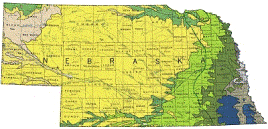US Geological Survey
Document Type
Article
Date of this Version
2012
Citation
Arch Environ Contam Toxicol (2012) 63:563–573; DOI 10.1007/s00244-012-9797-9
Abstract
Riffle-dwelling crayfish populations were sampled at 16 sites in 4 tributaries of the Spring River located within the Tri-State Mining District in southwest Missouri. Crayfish density, physical habitat quality, and water quality were examined at each site to assess the ecological effects of mining-derived metals on crayfish. Metals (lead, zinc, and cadmium) were analyzed in samples of surface water, sediment, detritus, and whole crayfish. Sites were classified a posteriori into reference, mining, and downstream sites primarily based on metal concentrations in the materials analyzed. Three species of crayfish (Orconectes neglectus neglectus, O. macrus, and O. virilis) were collected during the study; however, only O. n. neglectus was collected at all sites. Mean crayfish densities were significantly lower at mining sites than at reference sites. Mean concentrations of metals were significantly correlated among the materials analyzed and were significantly greater at mining and downstream sites than at reference sites. Principal component analyses showed a separation of sites due to an inverse relationship among crayfish density, metals concentrations, and physical habitat quality variables. Sediment probable effects quotients and surface-water toxic unit scores were significantly correlated; both indicated risk of toxicity to aquatic biota at several sites. Metals concentrations in whole crayfish at several sites exceeded concentrations known to be toxic to carnivorous wildlife. Mining-derived metals have the potential to impair ecosystem function through decreased organic matter processing and nutrient cycling in streams due to decreased crayfish densities.

